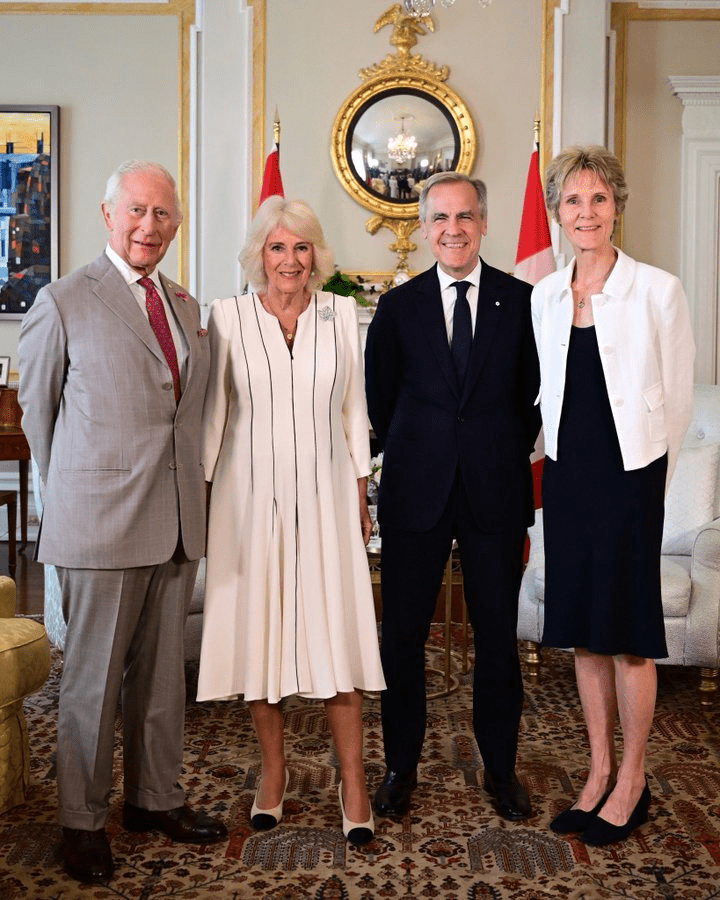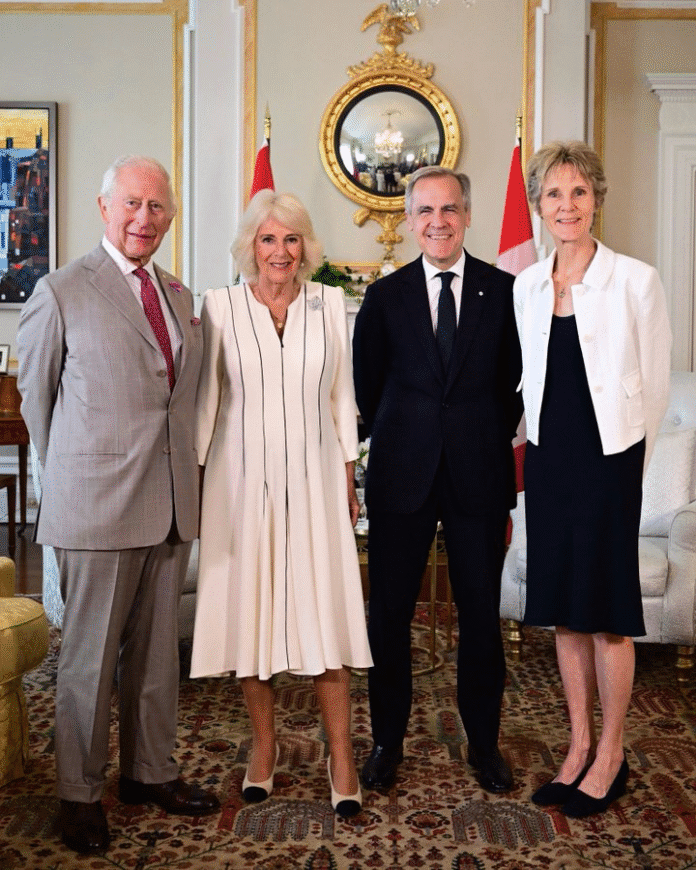26 May: King Charles III and Queen Camilla were welcomed with warmth and fanfare in Ottawa as they began a highly symbolic two-day visit to Canada, marked by events that reinforced the country’s constitutional identity and sovereignty. Their arrival comes just ahead of the King’s historic speech from the throne, which will officially open Parliament — a rare event not seen since Queen Elizabeth II performed the same role in 1977.
Their Majesties landed in Ottawa shortly after 1 p.m. Monday aboard a Canadian Armed Forces aircraft. Greeted by Prime Minister Mark Carney, Governor General Mary Simon, and Indigenous leaders, the royal couple’s arrival signals Canada’s reaffirmation of its monarchy as a foundational part of the nation’s democratic system. Carney had personally requested the King’s presence for this ceremonial duty.
A Symbolic Welcome
Dressed in a taupe suit with a deep red tie, King Charles and Queen Camilla, in a pastel pink coat dress, shook hands with officials and community members before heading to Lansdowne Park — the heart of Ottawa’s festivities. Greeted by Heritage Minister Steven Guilbeault and Ottawa Mayor Mark Sutcliffe, the royals mingled with Canadians, met vendors at a bustling farmers’ market, and took part in a ceremonial puck drop at a youth street hockey game.
Among the crowd were Sarah Garland, who presented maple syrup from her family’s sugar shack, and the Altaouil family — Syrian refugees now running a popular falafel stand. The interaction with these families highlighted the diverse, inclusive fabric of Canadian society.
A Message of Unity Through Ceremony
Later in the afternoon, Their Majesties arrived at Rideau Hall, the official residence of the monarch in Canada. They were joined by onlookers and dignitaries as they planted a blue beech tree — a species selected for its symbolism of resilience and heritage. Soil from each of Canada’s 13 provinces and territories was added, reinforcing the unity of the federation.
Prime Minister Carney, speaking after the ceremony, emphasized the significance of the visit in light of U.S. President Donald Trump’s recent threats to annex Canada and impose trade tariffs. “This visit shows that Canada is not for sale and will not be intimidated,” Carney remarked, calling the occasion “a good day for Canada.”
A Reflection of Constitutional Values
Governor General Simon, who hosted a private meeting with the King following the tree planting, noted that the presence of the royal couple at this pivotal time reaffirms the enduring constitutional bond between Canada and the Crown. She also administered the oath as Queen Camilla was sworn into the King’s Privy Council for Canada, a constitutional advisory body.
Later, Queen Camilla wore the historic diamond maple leaf brooch — a cherished Canadian royal symbol — for the official portrait alongside King Charles, Prime Minister Carney, and Diana Fox Carney.
A Broader Significance in a Shifting World
Observers say the timing and tone of the royal visit reflect growing global instability, including mounting Canada-U.S. tensions. Experts like Justin Vovk and Nathan Tidridge note that this visit reframes the monarchy as an active pillar of Canada’s democracy, not just a ceremonial relic. Tidridge added, “It gives Canadians a chance to reflect on democracy, Indigenous rights, and national identity.”
Recent polling also suggests Canadians are increasingly in favour of maintaining the monarchy, citing its role in ensuring stability amid geopolitical volatility.
A Personal Connection with Canada
Charles, who has visited Canada 18 times since 1970 and even trained here as a military pilot, has long expressed a deep personal connection to the country. “Every time I come to Canada, a little more seeps into my bloodstream and straight to my heart,” he once said. His wife, Queen Camilla, also has ancestral ties to Canada through her great-great-great-grandfather, Sir Allan MacNab, a former premier of the Province of Canada.
Looking Ahead: A Historic Throne Speech
On Tuesday, King Charles will make history as he delivers the throne speech in Parliament, outlining the Carney government’s legislative agenda. This includes economic reforms, redefining Canada’s relationship with the U.S., addressing the cost of living, and enhancing national security.
As tradition dictates, the Sovereign’s Flag will be flown above the Senate during the speech, temporarily replacing the Canadian flag — a powerful image that encapsulates the monarchy’s role in Canadian democracy.















